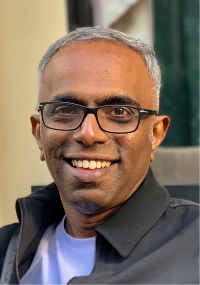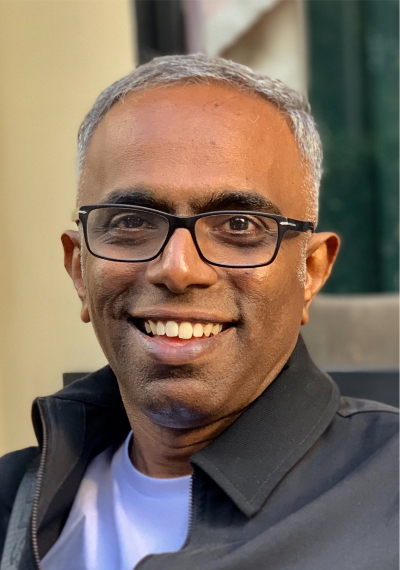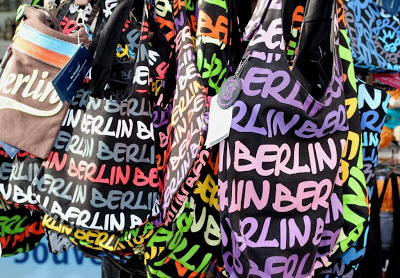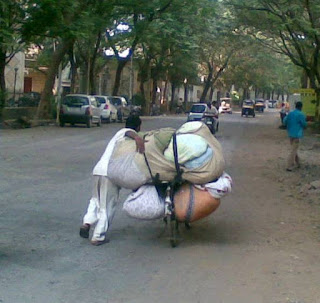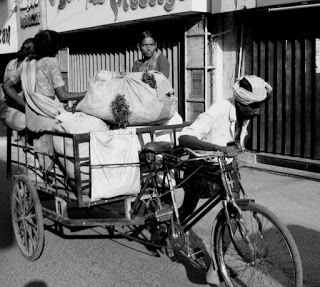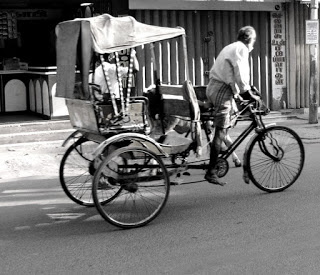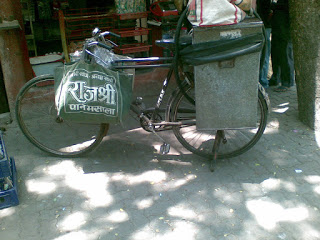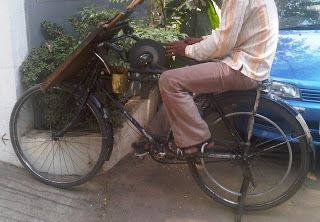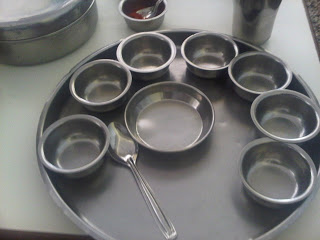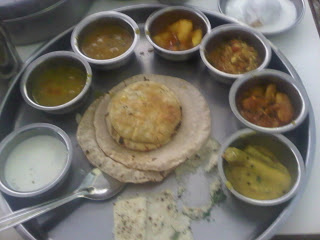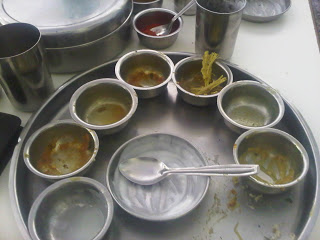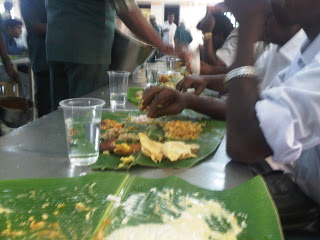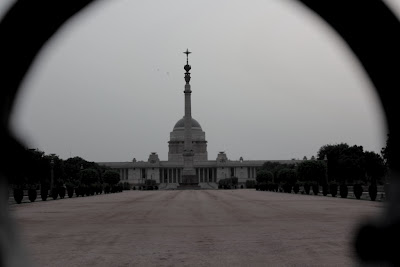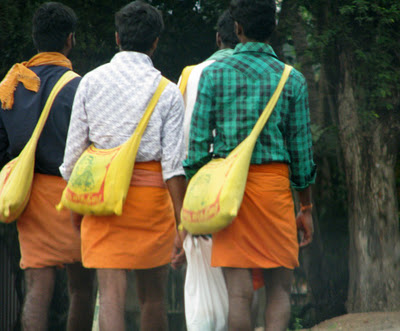Travel Tales
Statue !
Ever remember playing a game called ‘Statue’ in school? Well, I do. You didn’t have to do much. Someone had to point to someone else and say ‘statue’. You were required ‘freeze’. Just pretend you are a statue and watch the other chaps lick their lollipops and wallop their chocolates. And you had to wait till they came around to point in your direction and say ‘statue’ again. If you wanted to be a winner that is.
In most cases, as soon as the lollipop was unwrapped, people gladly embraced defeat, disgorged themselves from the statues they were forced to become and went after the lollipop like an animal in heat. That story is for another time.
Here are a few statues that I found and some looking up the web lead me to some people that I didn’t know of that well and lives that made a difference to a different generation of people.
First off, there is Kavimani Desika Vinayagam Pillai. A tamil poet who translated the work of Omar Khayyam. Wikipedia doesn’t give me much else. The name is more than merely ‘familiar’ but the thirst for knowing him more stands revived. The tags underneath the post on Wikipedia point to a few things that points in a direction. They read : “• People from Kanyakumari district • Tamil poets • Indian Tamil people • 1876 births • 1954 deaths • Indian writer stubs”. Helpful!
Do give My.Iyer a look up. Atleast for the sake of his statue that has looked at every single passing vehicle on Alagar Koil Road, Madurai. Come rain or shine!
A statue again bearing the time stamp of the World Tamil Congress, 1981. For me, KK Nagar is like home! And right under his nose, I have been upto mischief, had run ins, worked studiously, ran campaigns, bought medicines and what not. But never before did I realise that Tholkappiar was looking at it all.
Madurai Diaries. Crossing the bridge.The AV bridge!
Wheels within wheels
Of the several inflection points in the evolution of man, the invention of the wheel has occupied a place of prominence that is unrivaled Wheels have powered mankind’s evolution. Wheels within wheels have taken it to a different level. For now, we’ll stick to wheels!
The rickshaw and the tricycle continue to be lynchpins in transporting people in many parts of rural India. The power of bulging human calfs, heaving biceps and ballooning invisible lungs doing the work that infinitely more powerful inanimate engines do around the world.
While this can seem to be all romantic and such else, the bicycles last mile connect to the business world can be missed only at the cost of being comfortable with the idea that this blog is operating beyond the outer limits of its mental capabilities.
The refills, the trips for money collections, the market visits to the local corner store, all happen more often than not on a bicycle. Equipped with specially designed carry cases that could teach design studios a thing or two about innovation.
The list is long. Newspaper delivery. Cooking Gas. Courier services. Groceries. And so on. The bicycle has often proven that putting all eggs into one carrier is often not a bad idea, but a necessary pre-requisite for business.
Stories abound about how bicycles have been used for generating electricity to the Mysore palace and similar stories that would flare your ears and stretch your imagination when you try answering the question : ‘What else?”
The Great Indian Thali !
Wah Taj !
Going on to narrate a story of Aurangazebs cruelty and Shah Jehan’s forlorn lost last days. It was happening in real time : melodrama spiking history big time in present continuous tense !
India Gate
India Gate was one such experience for me.
The streets of India are paved with many thousands of years of history. Worth their weight in gold. ( Perhaps thats one good reason as to why the streets are so often dug up. Ok thats a joke that didnt take of. Please ignore).
Delhi especially so, oozes history through its pores !
Having seen India Gate as a standard fixture on TV, whenever any reference to New Delhi was made, it was only natural to approach it as yet another of those ‘fixtures’ to be seen.
On a Sunday evening, it can be particularly busy. With ice cream vendors competing with trinket peddlers who were arguing with sellers of maps who were attempting to be louder than some other set of people.
Amidst all this din, the muscular arches of India Gate stood gritty and steady. With enough light and just about some space amidst all the jostle to get a click or two in.
Heres some history that Wikipedia threw at me. Post the visit. Which I obviously wished I had read up before I went there. In anycase, you can read it here
It commemorates 90,000 Indian soldiers who lost the life fighting for the British Raj in many battles in distant lands during the times of the World War 1. Since independence it has become the Indian Army’s ‘tomb of the unknown soldier’.
Quite obviously, when any famous dignitary, turns up, he or she places wreaths here. Even if they have come in for signing an arms deal.
The inverted rifle & the soldiers helmet, the three services represented by their flags and the eternal flame thats on, can perhaps be a solemn sight. But on a Sunday night, I wonder significance of such a monument, melts in the frenzy of lapping up one more ice-cream !
Right in front of India Gate is a canopy which originally housed King George V’s statue. After independence the statue was suitably accommodated elsewhere and the canopy now lends itself well to the camera.
First you fight wars. Then splendid monuments are erected to remember those that died in wars. And then on Sunday nights, people come to such monuments and have ice cream.
How does just going about building monuments and feeding ice cream, without any war, sound to you ?
R for Rashtrapati
For purposes of beginning all over again, I choose a topic that has been on all news channels and probably on most of India’s mind as well : Rashtrapati http://premier-pharmacy.com/product-category/anti-fungal/ Bhavan.
Zoning in !
While in the US, it was a treat to be on the road. Almost everybody observed traffic signals. Their economy may be growing at 2-4% but the traffic signals work. In true American style the minimum gap between vehicles in the USA, would seem like the distance between Sun and Saturn for the average Mumbai motorist.
Although I was there in American soil for only a few weeks, I can hold court like a well entrenched native with impunity, especially if the topic was a comparative narrative on the difference between driving in Mumbai and driving over there.
So, this friend from the USA, sat next to me as I drove, on roads that sported less than normal traffic on that particular day. Within five minutes of her first ride on Indian roads, I saw her hands shiver. In the seventh minute beads of sweat began to appear. In the eight minute, from the corner of my eye, I saw her hold on to the inside of the door handle. In eight and a half, her face was buried in her palms.
It was obvious it was about the road. For my hands were firmly on the wheel and I hadn’t spoken a word, other than professional conversation. My mind was racing at a faster speed than the motorbike that held an aunty, uncle and two kids that hung out of the bike rather precariously, and were looking into the window.
Obviously a ‘phoren’ woman, face buried in her hands with a chap that sported furtive looks can be fertile feeding ground even for the dull variety. All four of them were peering into the car, waiting for action.
In a brief while, it was but obvious, that every eye atop any moving object on Western Express Highway was trained on our car. Not wanting to run the risk of being featured on some news starved news channel with a silly ‘breaking news’, I pulled over. And hesitatingly asked my friend if everything was ok?!?
‘The cars are coming too close here’. She said. In some sense, I was relieved that she didn’t get to see the aunty+Uncle + one kid + another kid precariously http://premier-pharmacy.com/product-category/arthritis/ hanging, all peering into the car. I was certain she wouldn’t have seen a circus act of that order!
We struck a deal. I would keep the car to the extreme left, that would come close to eliminate the possibility of a Ferrari hopeful overtaking on the left. Where she was sitting. After all of this, she offered “I’ll keep my eyes closed”. An offer, that was readily and graciously accepted.

After some agnonising moments, we discovered the root cause. A broken down truck, laden with steel rods. Sprouting a few twigs amidst all the steel. The twigs, any average Indian motorist would know, is a sign that warns other motorists of a broken down vehicle!
She went from ‘awe’ to ‘open-mouthed awe’ to ‘insanely open mouthed awe’ to ‘shaking heads in disbelief insanely open mouthed awe’.
Where in the world did we think of tying up a twig and a clutch of leaves onto a vehicle that had a breakdown ! Whatever happened to ‘hazard lights’ and the ‘hazard triangle’ to warn other motorist. Questions fired in quick succession.
I replied calmly. It was simple. Common sensical. Isnt it. I wouldn’t expect twigs to sprout from a lorry loaded with steel rods. That is abnormal. An obvious implication that something is amiss here and therefore the vehicle is stationary.
So, the minute your car breaks down, you don’t run you battery down with hazard lights and such else. You just reach for the nearest twig or a clutch of leaves and append it to some part of your car that is visible to others.
Which left her in a state of mild sedation, occasionally mumbling about Indian innovation and such else. I presume its going to take her a while to recover.
Until then, ofcourse, if you are travelling to India, a vehicle sprouting twigs is not a symbolic protest about global warming or something. This is a different kind of a breakdown. Ok ?
walk on
Although that sounds like a sleepy airy walk in the park, it isn’t so. It actually translates to several days of walking 30 odd kilometers daily.
It is the annual pilgrimage. Walking with their bare feet carousing the tar of hot roads, on which see some reinforced steel radials with hot speeds, more often than not. They walk. Carrying their belongings and all else that they would require on the journey atop their heads or slung across their shoulders
Unmindful of approaching traffic that could consist of whizzing buses or wheezing bullet carts, they walk. They are easy to spot. Dressed in a radiant yellow or an ensemble of green, roads in rural TN close to the foothills of Palani see them walk on.
I am told that they walk early in the morning. And late in the evening. Together making for almost 30 KM every day. They chant the holy name of Lord Karthikeya. And walk on.
The same happens in Maharashtra chanting the name of Sai Baba.
In Kerela they walk in the name of Lord Aiyappa.
The Amarnath Yatra up in the Himalayas.
And so we walk in the name of every God that we call out to. Mother Mary. Allah. Krishna. Shiva. Buddha. Mahavir. And ofcourse, Karthikeya. All over the country. And around the world too.
We walk many many miles over many many days. In penance. In celebration. In thanks or asking for something dear. I presume all the time that the mind is active while the legs plough on will provide for some reflection and reordering of thoughts. As well.
And so we walk on. For many miles over many days. In a strange quest for discovering love. Compassion. Peace. And well being.
Incase you cant imagine doing this with this level of an intensity, here is a suggestion. The battery of good Lords will agree, we have traversed an almost similar distance when we walk half way down the street and smile at our neighbour, help someone, do our duties with diligence and spread some cheer.
Walk on people. Walk with hope. Walk with joy. Walk with belief that life can and will be better for all of us.
By the way, that’s exactly what the doctor ordered. All doctors. Walk on.
